We’ve all had them! The kind of days when you just need to call a teacher friend on the way home from school to talk to someone who just “gets it.”
This is your person! The one who offers a listening ear, offering empathy, and encouragement. And the great thing about a relationship like this is that a few weeks down the road, you may get to return the favor when that same friend is the one having a particularly trying day!!
It’s a truly reciprocal relationship.
Well, this post looks closely at another meaningful reciprocal relationship–the relationship between reading and writing. When you work on writing, it returns the favor with improvements to reading. And vice versa!
So, let’s dig into the Writing component of our Explicit Skills Lesson Template. You might even want to call your teacher bestie so you can read this post together! 💛
Before diving into the “How To” for the Writing component, peek back at the blog posts we’ve shared in the last few weeks about our Explicit Phonics Lesson Template.
During the first three components of our Explicit Phonics Lesson Template, students,
1. Hear a target sound as they start with phonology.
2. Match the sound to the symbol, attaching the phoneme to its corresponding grapheme.
3. Blend whole words with the target sound-spelling as they build the trust that the skills they have practiced will help them as readers.
Students have been building a reading base in the first three components. They have set the stage for decoding and are ready to make traction as readers by applying those skills to writing. Prepare to be amazed when we switch to the reciprocal skill, encoding, or writing! Your readers are going to take off!
Encoding, or writing, is another high-leverage instructional routine for systematic phonics instruction. This component will provide purposeful practice applying newly learned phonics patterns to writing new words.
As students write a new word with the target sound-spelling, they actively use phonemic awareness, sound-spelling awareness, and blending. What’s more, writing bolsters the auditory and visual alignment between sounds and symbols, prepping the brain for orthographic mapping.
Students can practice this important phonics work by writing words and sentences that include the target skill or previous target skills.
So, before you get going, you’ll want to get your tools ready. We suggest starting with:
⇢Soundbox frames in a page protector for each student.
⇢A dry-erase marker and eraser for each student.
Let’s get started ⤵
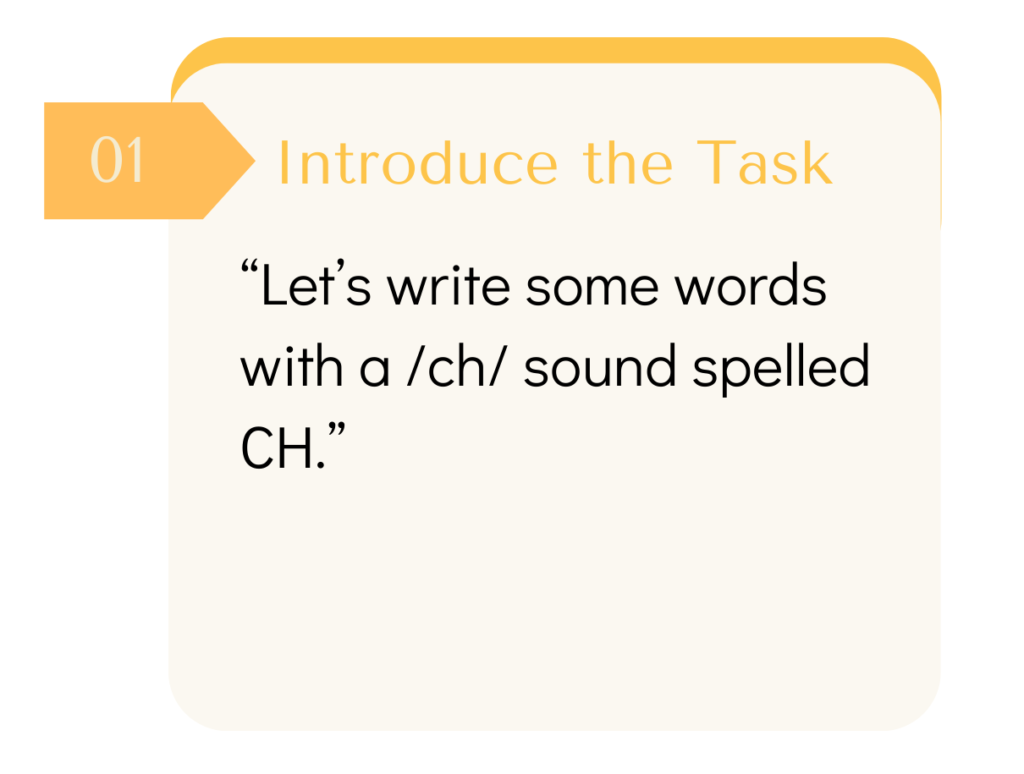
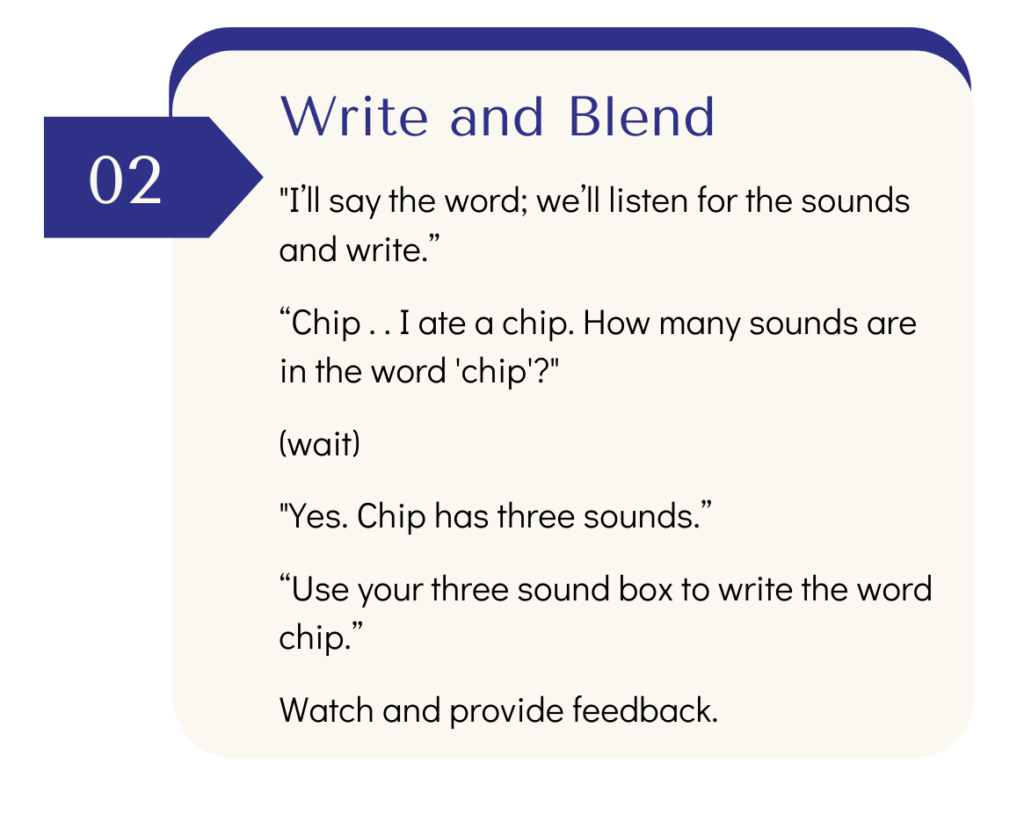
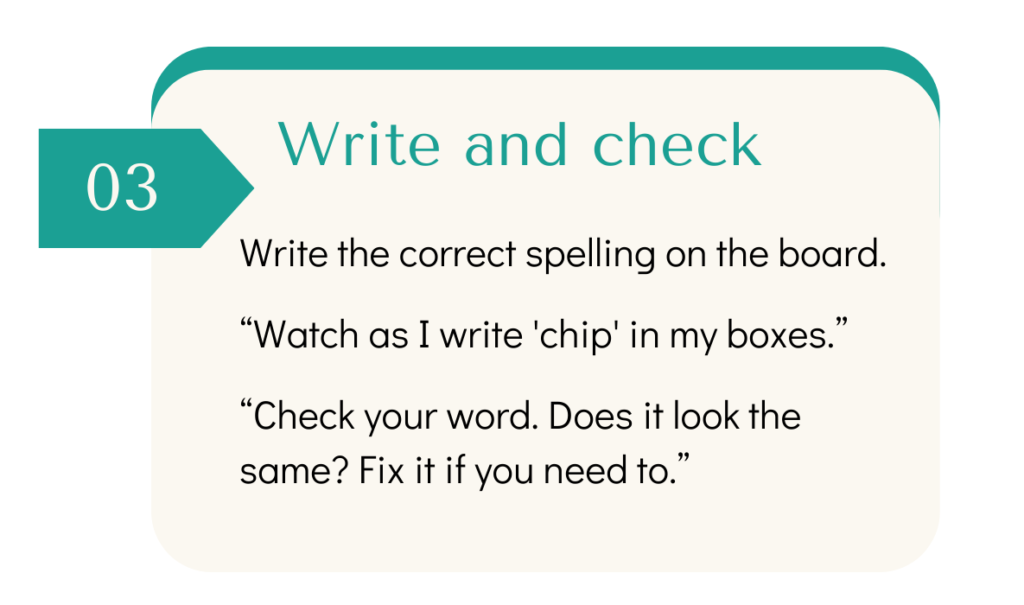
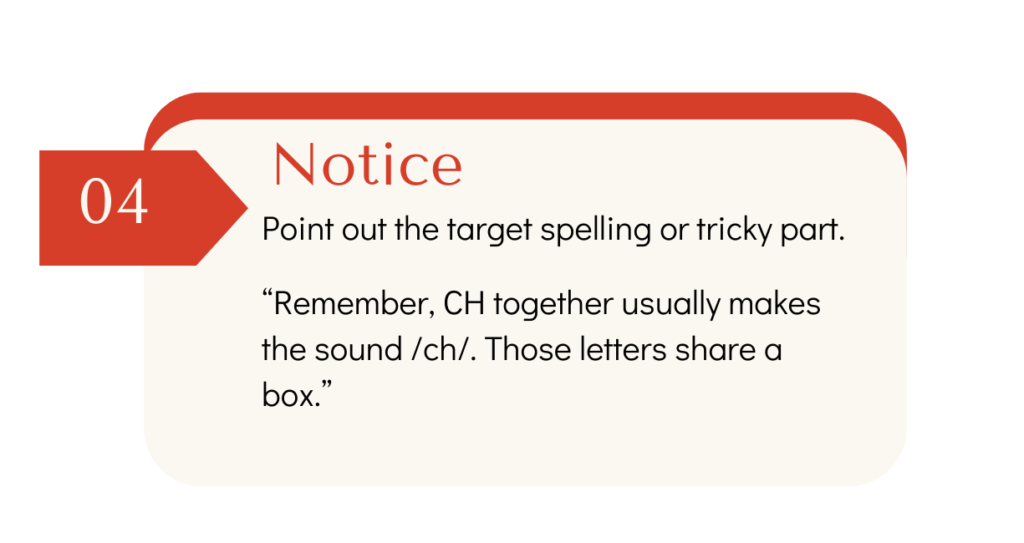
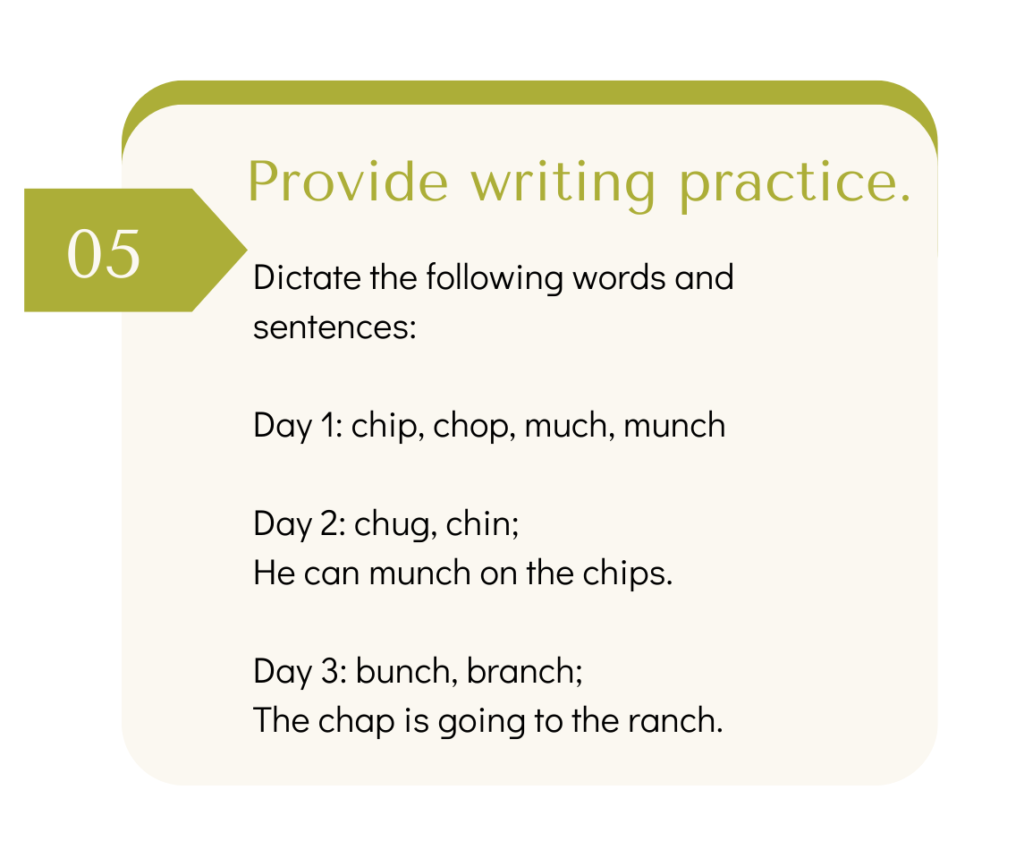
The scaffolds can decrease as the week progresses and the level of student independence increases. The descriptions below offer an example of how diminishing scaffolds might look in practice.
Day 1: Use sound box sheets with 2, 3, 4, or 5 boxes for a more supportive scaffold.
Day 2: Use whiteboards instead of sound box sheets. Students write two review words from Day 1 and write the sentence students read at the end of Day 1. (More about reading in next week’s blog post!)
Day 3: Practice writing 1- 3 more challenging words and a new sentence or two. You can select words and sentences with varying difficulty based on student needs.
Of course, writing is translating speech into print. To check their writing, students rely on decoding and blending skills to translate the print back into speech so that the listening brain (whether we read aloud or “silently”) can comprehend it. This process is the reciprocal relationship of reading and writing; remember, besties!
As your students encode, you will be able to look for evidence of your instruction. Student writing is a powerful glimpse into students’ orthographic processing. Each “mistake” can help you see the students’ thinking and skills they have internalized and show you which skills need more support.

Don’t forget the tools! We shared word list resources for blending practice in last week’s blog. This week, you can also reuse those same resources to find words for dictating words and sentences. You can find these tools on our Downloads Page.
Next week, we will dig deeper into the last component of our lesson template: Reading Texts.
Explore our 8-part blog series “Using our Flexible Phonics Lesson Template.”👇
Using Our Flexible Phonics Lesson Template (Part 1): An Introduction
Using Our Flexible Phonics Lesson Template (Part 2): The Phonemic Awareness Warm-up
Using Our Flexible Phonics Lesson Template (Part 3): Explicit Skills Practice
Using Our Flexible Phonics Lesson Template (Part 4): Blending Words
Using Our Flexible Phonics Lesson Template (Part 5): Writing
Using Our Flexible Phonics Lesson Template (Part 6): Reading Text
Using our Flexible Phonics Lesson Template (Part 7): Word Chains
Using our Flexible Phonics Lesson Template (Part 8): Spelling Comparisons
-
Jan Burkins and Kari Yates are authors, speakers, and consultants, who are dedicated to helping teachers around the world translate reading science into simple instructional moves that help teachers make learning to read easier for their students while still centering meaning-making, engagement, and joy.
Recent Posts


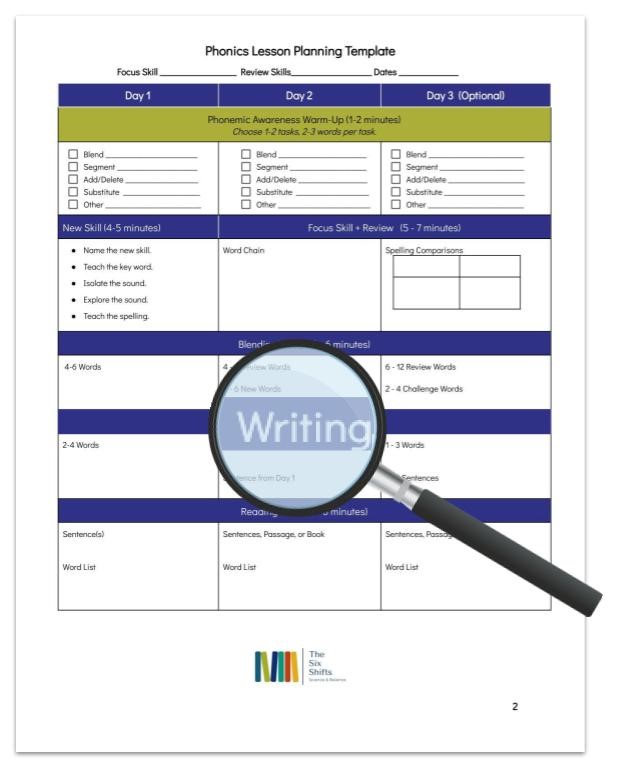
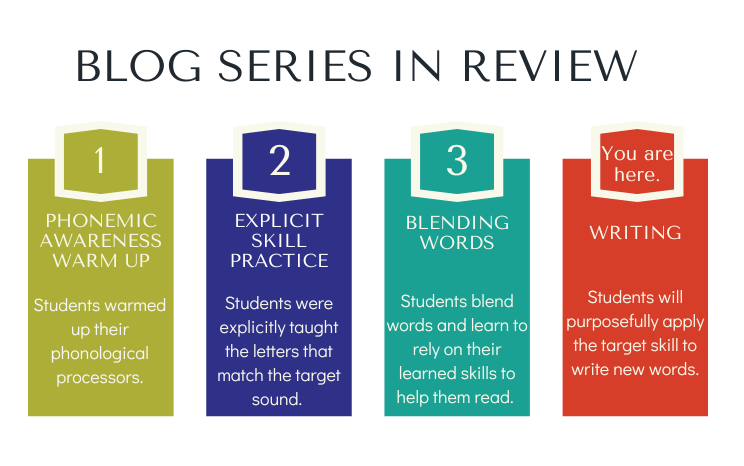

Thank you so very much for this amazing information. I look forward to learning about the last one. I am using your template in my small groups. It has helped me & my students immensely.
Again, thank you!
Have an amazingly wonderful week.